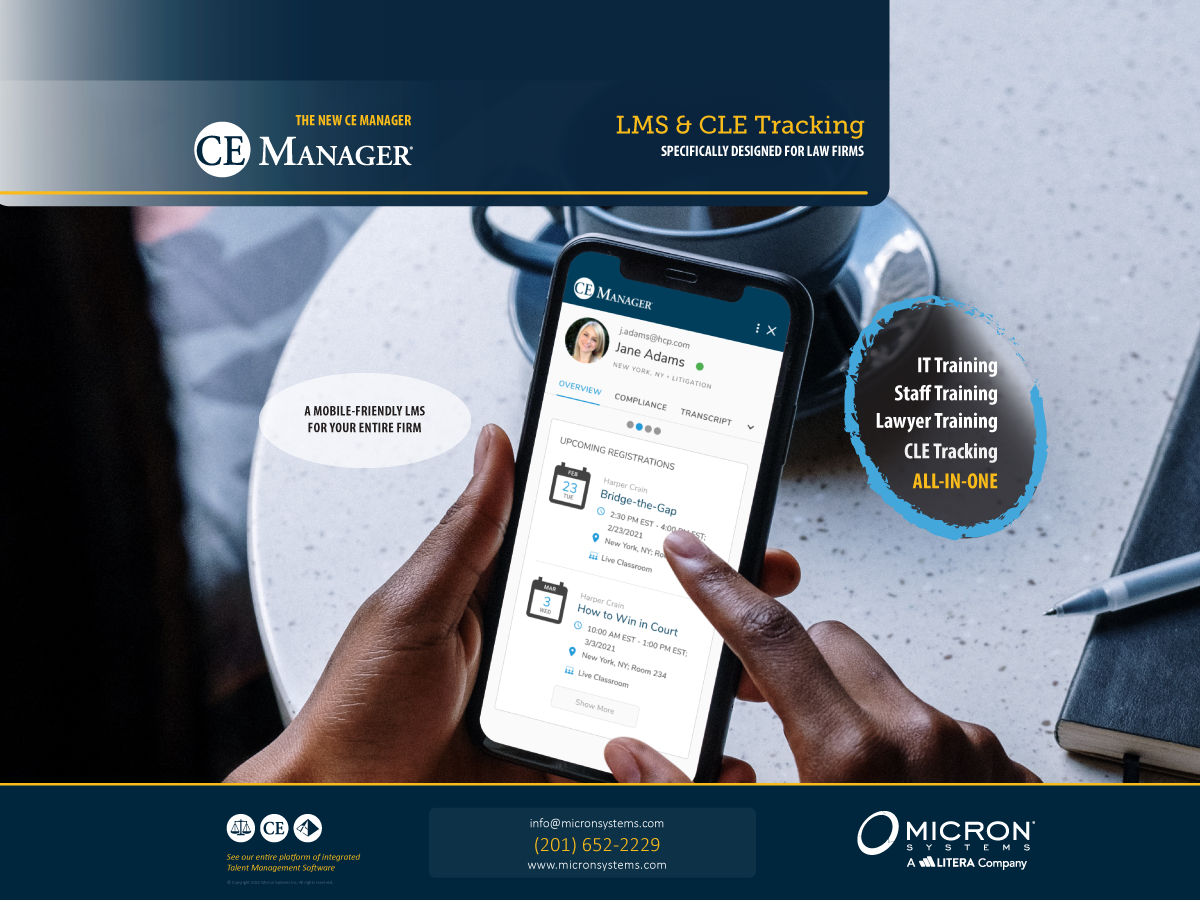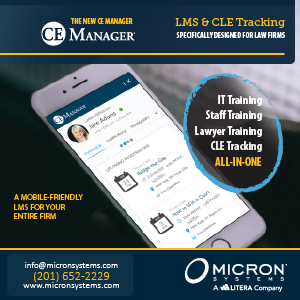“We converted three major systems during the pandemic — financial/time and billing, document management and the 401(k) plan,” says Chris Sims, Director of Finance at Pirkey Barber and member of the Austin Chapter. “The latter two went OK. Where we really saw an issue was in the financial/time and billing conversion.”
Because of the pandemic, the firm had a hard time finding software support on-site to assist in the first few days of the cutover. Employees couldn’t attend in-person training on the software, either. Nearly two years after conversion, the firm is still experiencing some hardship and hasn’t implemented every piece of the system.
“The delay is reflective of the pandemic environment,” says Sims. “While it seems obvious now, I don’t think we would have moved forward knowing how long the pandemic lasted. We were bold, to say the least.”
While the pandemic affected everyone, there is another challenge to tech implementation that is specific to legal: Historically, many firms resist technological change.
“The industry in general is very conservative when it comes to switching to paperless systems,” says Daniel Cook, head of business development and HR Consultant at Mullen & Mullen, Texas. “Part of this is the difficulty in convincing most clients that legal documents can be safely stored in the cloud. Another contributing factor is the resistance of practices themselves, which are often led by older lawyers who are so steeped in how things ‘have always been done.’”
Today, though, technology can drive a law firm forward by increasing efficiency and productivity. Additionally, it can attract young, talented workers, who are going to be the future of the firm.
It’s clear that new legal tech implementation is crucial, but it has to be done the right way. When going through this process at your law firm, make sure you have a realistic plan in place and bring in the professionals as needed.
The following are useful tips on tech implementations from the experienced pros who have successfully done it themselves.
1. INCLUDE EVERYONE IN YOUR IMPLEMENTATION
Thompson & Horton had used the same technology provider for years. But, according to Director of Office Operations Stacey J. Ransleben, CLM, the firm outgrew them. When it came time to introduce new technology, they hired an outside IT provider. One of the lessons that Ransleben learned early on in the process was that she needed to include everyone in the implementation.
“As a director, I do not use our technology the same way an attorney, assistant, paralegal or billing person would use it,” says Ransleben, a member of the Houston Chapter. “Get their input and keep them involved.”
She says it’s also crucial to keep the entire firm informed about what is happening, why and when. “While a lot goes on behind the scenes and may not impact the daily work of most, people want to know. Change can be scary, and if people are not told what is happening, they will fill in the blanks — and often wrongly. Get ahead of the message and help people feel at ease with the changes,” Ransleben says.
2. ANTICIPATE A LONGER TIMELINE THAN EXPECTED
Pandemic or not, tech implementations take a long time. According to estimates from ArcherPoint, the average timeline is six months to two years — but it will vary depending on factors like the size of your firm, expected concurrent users and the complexity of systems being installed.
Thomas Pivnicny, Managing Partner at Kitay Law Offices, says his firm prepared for their case management software switch for about one year, and they’ve been successfully using their new software since July 2021.
“Technology can drive a law firm forward by increasing efficiency and productivity. Additionally, it can attract young, talented workers, who are going to be the future of the firm.”
“Always plan on the build-out and implementation process taking much longer than you initially expect,” says Pivnicny. “When doing demos and talking to sales representatives, the new product always sounds super easy to use and like it will magically solve all of your problems overnight. In reality, getting a new tech product to do what you need it to do for your company requires you to conduct a lot of front-end work and training to make going live as effective as possible.”
3. IDENTIFY LEADERS TO HELP WITH THE PROCESS AND TRAINING
When taking on a large-scale project that affects the core of your operations as a law firm, Pivnicny suggests it’s important to have at least one or two in-house staff members who can be an integral part of the process when you’re building out as well as implementing new software.
“It sounds really great when a vendor says that their product is super easy to learn, use and roll out to your staff, but the reality is that you need to have a couple of people in-house who can ensure the product is tailored to your company as best as possible from the beginning,” he says. “Also, this is increasingly important as you and your staff learn that you need to make incremental changes to the software.”
If you’re constantly reaching out to a support person at the vendor, you’re going to likely need to wait for attention and service. On the other hand, if you can make all or most of your changes in-house, you can adapt more quickly and improve your experience with the new product, says Pivnicny. “Doing so also increases the chances you will be able to squeeze out all possible performance improvements and increased efficiencies the product can provide.”
Software only works if people know how to use it, so once you’ve implemented the changes, catch everyone up by holding trainings on how to use it. Host training sessions either in person or remotely, like the team at Pirkey Barber did.
“We held ‘office hours’ on Teams and Zoom to help folks pop in with quick questions or additional help, which seemed to work well in lieu of face-to-face training and support,” says Sims.





